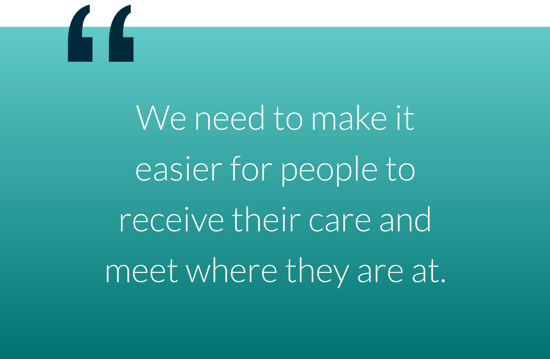Meeting Patients Where They’re At With Innovation & Tech
Multiple thought leaders talk about the current state and how innovation, technology and partnerships are seeking to address. Highlights and key takeaways from executives at the March of Dimes, UnitedHealthcare, Marani, Philips Healthcare, Alina Health and Johnson & Johnson.

Ann mentioned a perfect storm with the pandemic shining awareness on prenatal and postpartum needs that is now driving technology. Specifically to rural America, The University of Minnesota Rural Health Research Center estimates that more than half of rural counties do not offer obstetric services, however more than 28 million women of reproductive age live in these areas. Therefore, these women often do not get prenatal care due to difficulties with long commutes, taking off time from a job, paying for childcare and access to transportation to mention a few. Dr. Lisa discusses the opportunities and Ann shares how biosensors and AI are supporting these.
 DR. LISA ON THE PATIENT EXPERIENCE: “What we’re talking about is making sure that we have options for how people can receive healthcare. There is no one way to do this. What would the option to have a remote prenatal care visit or remote antenatal testing prevent? I have patients that drive one to two and a half hours to the office for a 30-minute test. We need to make it easier for people to receive their care and meet them where they are at, along with making easier for those care providers to interface with the technologies. I don’t think technology will replace human interaction and human contact. It has to complement what we as physicians were trained to do, which is to interact with patients.” – Dr. Lisa Saul, President of Mother Baby Clinical Service Line of Allina Health.
DR. LISA ON THE PATIENT EXPERIENCE: “What we’re talking about is making sure that we have options for how people can receive healthcare. There is no one way to do this. What would the option to have a remote prenatal care visit or remote antenatal testing prevent? I have patients that drive one to two and a half hours to the office for a 30-minute test. We need to make it easier for people to receive their care and meet them where they are at, along with making easier for those care providers to interface with the technologies. I don’t think technology will replace human interaction and human contact. It has to complement what we as physicians were trained to do, which is to interact with patients.” – Dr. Lisa Saul, President of Mother Baby Clinical Service Line of Allina Health.
ANN ON TECHNOLOGY INNOVATION: “There’s an incredible wave of advancement in medical technology. As for biosensors, they’re now being developed to be non-invasive, easy to use and connected. They adhere to the skin and they’re on a device that can capture data. What I get most excited about is that advancements in AI and machine learning. We can combine that data with outcomes data and utilize machine learning to see patterns in data and alert clinicians that something is wrong. It gives clinicians not just more data, but data that’s actually useful as information which can be acted on.” – Ann Holder, Founder & CEO of Marani
In terms of technology development, Dr. Shirley raises a critical point on a lack of proper representation which can often be overlooked.
“How do we bring the women into the development of technology as a central stakeholder? As a recent example from an article I read from researchers in Georgia, they were writing about how to promote mobile technologies for black mothers. And researchers identified that the lack of inclusion of black women in mobile health interventions have led to a number of barriers and lack of interest. The research is not prioritizing minority groups and their mistrust and privacy concerns “- Dr. Shirley Sylvester, Women’s Health Senior Medical Director of Johnson & Johnson
The promising news is that a recent University of Florida study found a high willingness of African American women to participate in e-health and mobile health research. Taking advantage of this, PM3 (stands for Prevent Maternal Mortality Mobile Technology) an initiative in partnership with Morehouse School of Medicine, Emory School of Nursing and Georgia Tech is developing a postpartum mobile app for black women developed by black women and other people of color.

SUBSCRIBE FOR OUR LATEST CONTENT